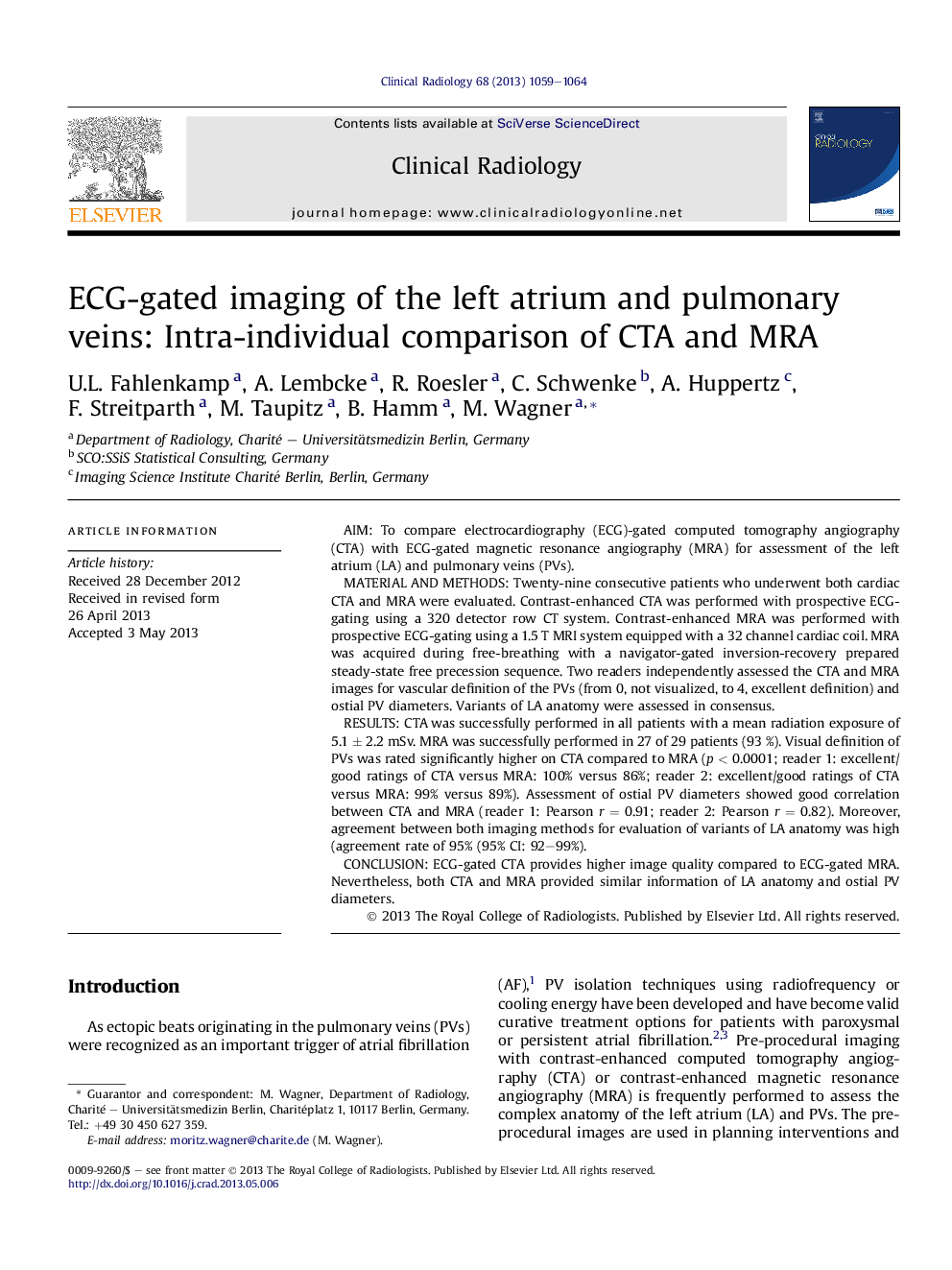| Article ID | Journal | Published Year | Pages | File Type |
|---|---|---|---|---|
| 3982459 | Clinical Radiology | 2013 | 6 Pages |
AimTo compare electrocardiography (ECG)-gated computed tomography angiography (CTA) with ECG-gated magnetic resonance angiography (MRA) for assessment of the left atrium (LA) and pulmonary veins (PVs).Material and methodsTwenty-nine consecutive patients who underwent both cardiac CTA and MRA were evaluated. Contrast-enhanced CTA was performed with prospective ECG-gating using a 320 detector row CT system. Contrast-enhanced MRA was performed with prospective ECG-gating using a 1.5 T MRI system equipped with a 32 channel cardiac coil. MRA was acquired during free-breathing with a navigator-gated inversion-recovery prepared steady-state free precession sequence. Two readers independently assessed the CTA and MRA images for vascular definition of the PVs (from 0, not visualized, to 4, excellent definition) and ostial PV diameters. Variants of LA anatomy were assessed in consensus.ResultsCTA was successfully performed in all patients with a mean radiation exposure of 5.1 ± 2.2 mSv. MRA was successfully performed in 27 of 29 patients (93 %). Visual definition of PVs was rated significantly higher on CTA compared to MRA (p < 0.0001; reader 1: excellent/good ratings of CTA versus MRA: 100% versus 86%; reader 2: excellent/good ratings of CTA versus MRA: 99% versus 89%). Assessment of ostial PV diameters showed good correlation between CTA and MRA (reader 1: Pearson r = 0.91; reader 2: Pearson r = 0.82). Moreover, agreement between both imaging methods for evaluation of variants of LA anatomy was high (agreement rate of 95% (95% CI: 92–99%).ConclusionECG-gated CTA provides higher image quality compared to ECG-gated MRA. Nevertheless, both CTA and MRA provided similar information of LA anatomy and ostial PV diameters.
